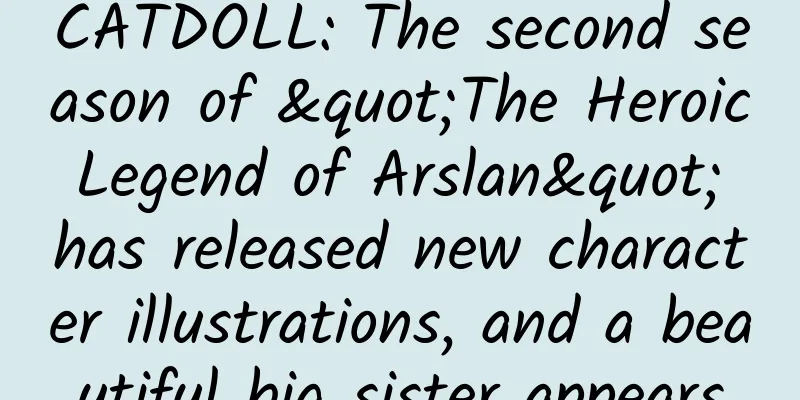CATDOLL: Is Sai possessed? A skinny boy obsessed with Hikaru no Go becomes Japan champion after 13 years

|
On April 22, in the final round of the 53rd Mori Building Cup Tenth Dan Tournament, Atsushi Ida, born in 1994, played black and defeated the defending champion Takao Shinro at the Japan Go Association, becoming the first Tenth Dan champion after Daisuke Murakawa. Atsushi Ida also broke the record of 21 years and 11 months previously held by Yuta Iyama when he won the championship at the age of 21 years and 11 months, becoming the youngest champion in the history of the Tenth Dan Tournament.
On March 15, 1994, Atsushi Ida was born in Suzuka City, Mie Prefecture, Japan. At the age of eight, Atsushi Ida was attracted by the manga "Hikaru no Go" and began to enter the world of Go. In the sixth grade of elementary school, he became a student of the Central Headquarters of the Japan Go Association. When he graduated from junior high school, the fifteen-year-old Atsushi Ida officially became a professional Go player. After becoming a professional chess player, Ida Atsushi was full of energy and won all of his first eleven professional matches, defeating many 9th dan players including the famous player Yamashiro Hiroshi, and was promoted to 3rd dan in 2011 at a rate of one dan per year. After becoming a professional chess player, Ida Atsushi frequently participated in international qualifiers at his own expense, and honed himself against strong players from China and South Korea. In 2012, he won consecutive victories over Jiang Ruze and Li Xixing in the 4th BC Credit Card Cup and entered the main tournament. He defeated Chinese master Peng Quan in the first round and entered the top 32. Perhaps it was from this time that Atsushi Ida was regarded as a rising star with great potential by the Japanese Go community. He was selected to compete in the Chinese Go Team Tournament twice in 2012 and 2014 (as a member of the Sino-Japanese Friendship Team). In 2012, he won 3 games and lost 4 games in the 2012 B-level Go Tournament, and in 2014, he won 4 games and lost 3 games in the 2014 C-level Go Tournament. He was also shortlisted for the five-man list of the Japanese Nongshim Cup twice. In 2013, Atsushi Ida broke out in China, winning six consecutive victories over his predecessors and entering the Honinbo Tournament, and was promoted from the fourth dan to the seventh dan. He also performed well in the seven-month-long tourney, and won consecutive victories over Keigo Yamashita in the final round of the Challenger Decisive Tournament, becoming the youngest challenger in the history of the Japanese Honinbo Tournament and being promoted to the eighth dan. "The time for a change of dynasty has come in the Japanese Go community," this atmosphere was brought into the Go community by Atsushi Ida. Although Atsushi Ida lost to the absolute overlord of Japanese chess, Yuta Iyama, 1:4 in the two-day seven-game final, his growth is obvious to all. In early 2015, Atsushi Ida won the youngest champion of the NHK Cup TV Rapid Chess Tournament at the age of less than 21. Not long after, Takao Shinji, one of the "Heisei Four Kings" who dominated the Japanese chess world for ten years, was unable to resist Atsushi Ida's advancement and handed over the tenth dan title. The thin boy, who was 163 cm tall and weighed 52 kg, ascended to the seven major title championships that symbolize the honor of a Japanese chess player's life. Atsushi Ida said, "I will reflect on my failures, but I will not regret it." This is a clear statement of personality for a post-90s chess player. But on the other hand, Atsushi Ida was deeply influenced by Chinese classical culture in the traditional atmosphere of the Japanese chess world. On the exclusive folding fan signed by chess players, Atsushi Ida chose the inscription "十驾" for himself, which comes from "Xunzi: Encouragement to Study": "The success of a slow horse is ten mile drive." The Sankei Shimbun, the sponsoring news agency of the Japanese Tenth Dan Tournament, commented on this: "Talented young people may become the leaders of the Japanese chess world after China and South Korea through ten times the effort." The manga "Hikaru no Go" was written by Yumi Horita, illustrated by Takeshi Obata, and supervised by professional Go player Yukari Umezawa. It was serialized from the late 20th century to the early 21st century and had a wide influence in the East Asian cultural circle. There are many different opinions about the prototype of the protagonist of "Hikaru no Go", and the original author said that he was related to Yuta Iyama, and also referred to the Kansai Go player Daiki Seto in the image.
More than a decade has passed, the manga has no sequels, and Sai has never returned to Hikaru's side, but the influence of Hikaru no Go has penetrated into real life. In addition to Atsushi Ida, who entered the world of Go because of Hikaru no Go in his childhood and has now become one of the Japanese title kings, Yao Zhiteng, who was born in Taiwan in 1998, went to Japan to study because of his love for Hikaru no Go and became a player affiliated with the Japan Go Association; Shibano Toramaru, who was born in 1999, also started learning Go under the influence of Hikaru no Go and successfully became a professional player in 2014... As that generation of young people gradually grows up, such examples are bound to be countless. And this is the perfect proof of the immortality of an excellent anime work. |
Recommend
CATDOLL: "Nisekoi" Season 2 Episode 11 Picture Preview!
This work is a love comedy that initially revolve...
CATDOLL: "Xia Lan" Episode 138 The girl's call is to force Chi Suxing
The 138th episode of "Xia Lan" is offic...
CATDOLL: "Brave Adventure" manga chapter 82 I didn't expect that a beautiful woman like you would also betray me
The 82nd chapter of the comic "The Brave Adv...
CATDOLL: The TV animation of the rugby manga "ALL OUT!!" will be broadcast in January 2016
The rugby-themed manga "ALL OUT!!" anno...
CATDOLL: July new anime "Dragon Ball: Super" new magazine pictures revealed animation plot
The latest animation of Akira Toriyama's popu...
CATDOLL: The cast of the live-action movie "JoJo's Bizarre Adventure" is revealed and it's really ruined this time
We previously reported that Warner Bros. has regi...
CATDOLL: The new content of "Puella Magi Madoka Magica" is revealed, and the senior sister becomes a god of war
At the SHAFT 40th anniversary event, the official...
CATDOLL: The first trailer of the domestic animated film "Invincible Ping Pong Rabbit" is released. The cute rabbit teaches you how to play tennis
The superb skills of the national table tennis te...
CATDOLL: The third single of the duo "かと*ふく" by Kato Emiri and Fukuhara Kaori is released. "You Gotta Love Me!" will be released in November
Speaking of which, Kato Emiri and Fukuhara Kaori ...
CATDOLL: "Naruto" new stage releases makeup photos again, Uncle Snake makes a terrifying appearance
The stage play of "Naruto" was very pop...
CATDOLL: Blood Blockade Battlefront voice actors Hikaru Midorikawa and Hidekatsu Shibata talk about their roles
In the popular anime "Phantom Battlefront&qu...
CATDOLL: LL believers kneel and are splashed with water; Chongqing "Love Live!" painful subway incident sparks heated discussion again
Previously, a large number of people kneeling and...
CATDOLL: "Spirited Away" is a ratings powerhouse, and its popularity remains high after seven rounds of broadcast
Not long ago, we saw the news in major media: &qu...
CATDOLL: The 12th episode of "Painting Rivers and Lakes Spirit Master" is online, sexy queen was killed
There are two kinds of people in the world, ordin...
CATDOLL: Netizens revealed that the Chinese trailer for Dragon Ball Z: Resurrection of F has appeared in theaters
Recently, there have been many reports that vario...









